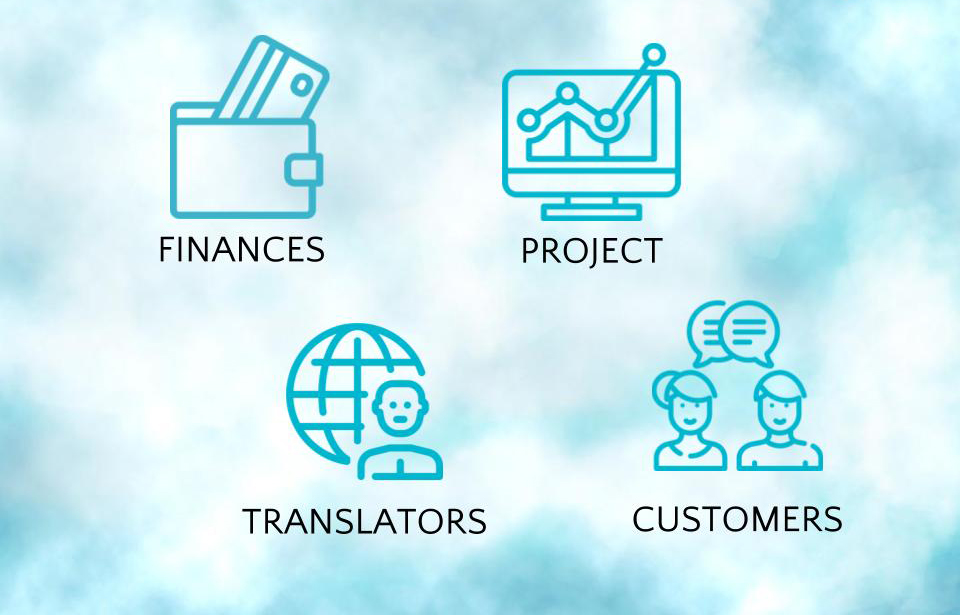
Every business has its own challenges, and they are as unique as every organization itself. However, these demands can often be divided into external and internal ones.
External challenges include everything happening outside of your office: new technologies, competitors, market fluctuations, political instability, differing levels of taxation, a hurricane that leaves you without electricity, and hundreds of other possible scenarios.
Internal challenges invariably boil down to the quality of a firm’s management: how you build the processes and organizational structure, how you formulate and implement strategy, and how you as CEO manage to do the really important things at the right time. This article will focus on such internal challenges as strategy, priorities and time management.
It’s not about translation
What do you think every translation company is doing and getting paid for? If they are paid solely for translation, why can’t the client just find a freelance translator and get rid of the extra link in the supply chain? What is the value of a company in the translation industry?
It’s management. Because apart from translating, proofreading, etc., you are helping your clients get rid of headaches such as searching for and training translators, distributing work between them, coordinating quality assurance, controlling the deadlines, paying each of them, etc. Instead of doing all of this, the client just sends you a file and expects to get back what they need. They eventually pay you for the peace of mind, not for the translation as such.
So, if you are a translator and wish to become a company, here is some news for you: you’ll have to learn management skills, and if you are successful in that, you’ll even have to give up translating when you are big enough. It’s a hard choice, isn’t it? So before starting a translation company, ask yourself if management is the job you want to do. Many freelancers have tried to start a company, but gave it up after the first few management problems, such as: your translator does not deliver in time, the quality is poor and you have to explain it to your client; or your client does not pay on time, but you still need to pay your translators if you do not want to be blacklisted. Or you may confirm a project to the client, and all the translators suddenly become unavailable…
There are hundreds of similar situations and problems that might happen every day. And you know what? Handling them is the job of a translation agency, not translation itself. Being responsible for the blunders of other people is the job of a manager. So if this is not what you like, or are ready to do, you’ll be happier just translating. However, if you are ready for these management challenges, then welcome to the club!
Your clients outsource all management responsibilities to you, and you have to coordinate everything and get paid by them.
The core functions, a hamster wheel and the black box
So, managing a translation business involves:
- Keeping a database of clients, vendors, their contacts, and prices
- Managing translation projects, i.e. distributing the work among your translators, managing the workflow, controlling deadlines and deliveries
- Keeping track of finances: record receivables, issue invoices and record payments both for your clients and vendors
- Controlling and knowing what’s happening in your team at various moments: projects, job assignments, balances, etc., as well as seeing the whole picture: how much you earn and spend each month, how the dynamics of each client changes, etc.

It’s a lot of work, and when a translation agency starts, a business owner controls all these activities. But as the company grows, the amount of these activities grow too, and eventually the business owners find themselves in the hamster wheel:
.jpg)
It takes a big effort to get out of there, and this escape is made by moving the knowledge and skills outside of your head and delegating them to your team:
.jpg)
So you get rid of some routine by giving these jobs to your managers and freeing your mind for something more creative. But the trap here is that after a while you may stop understanding what is going on inside of your team and your business becomes a black box:
.jpg)
It could be a perfectly working black box grinding the cash for you, but if something gets broken inside of that box, you will have a real problem fixing in. You will have to open the box, learn how it should work, find some skeletons, spend much time and money cleaning and mending it… and sometimes it may already be too late…
One of the largest translation companies in the U.K. went bankrupt because they were selling their services so cheaply that they could not cover the expenses of translators. And top management did not know that!!! Over 10 years of experience, over 5 million pounds of yearly turnover, and they got lost in the black box!!!
Do not put it off until tomorrow
So you need tools to control it all:
.jpg)
You may use different programs for different purposes, e.g. spreadsheets, emailing applications, accounting software etc., but they do not give you the full picture, and the data may conflict in different documents. This may be solved by having a single business management system for everything:
There are several systems on the market you may choose. For obvious reasons this article focuses on one of them, Protemos.
But first let’s talk about the priorities in business. You see, the most frequent reason why companies are not implementing time and money-saving systems is because they… have no time. But how can they have time if they are not introducing the tools that will let them save time?
It’s all about setting the correct priorities. Look at this picture. You know this concept. You have to put off urgent but not important things and concentrate on important things which are not urgent and not pushing you.
.jpg)
But it is so hard to shift our concentration from urgent minor things to something important that can wait. Deep inside us, there is a reptile brain that forces us to react to minor distractions and postpone the things that could take us much higher.
When you do some minor work, you either see the result or get rid of some little problem immediately. But when you make a strategic action, nothing happens immediately after that. You’ll have to wait for months or years to see the result, and it demotivates our pleasure-greedy reptile part of the brain.
So make an effort and force yourself to do strategical things even if you think they can wait. Tomorrow you’ll not have more time if you do not change the priorities now. And if you do not fix important things today just because they can wait, some day they will cause problems that will require your urgent action.
So you’ll need to make an effort to implement a translation business management system: allocate a time, search for the options, test them, choose the best one, and implement it.
From our perspective, we’ll understand if you select some other system instead of Protemos, but we really cannot understand how you can work without any system. You must be super-heroes if you can…but why don’t you release your super-power to something more creative, like moving your business to a new level?
Our research shows that the bigger the company, then the more chance it needs such a system and needs to use it. But even if you are small, you want to grow big, right?
So you’ll have to organize your management like a big company, or you won’t be able to grow simply because, sooner or later, the routine will eat you completely.
So put aside the routine, and work on strategy. And when you do so—and see the results, I bet you will regret that you did not do it earlier. One of Protemos’ customers wrote to me recently that she regretted not implementing the system immediately, and postponing it for half a year, because she realized how much time she could have saved.
Now let’s have a look at the Protemos system
Registration is quick and simple, and there’s no need to install anything or to ask someone to setup an account for you. Just press “Sign up” on the Protemos web site:

The system will guide you through the wizard: asking you about your contact details, services, and prices, and in 5 minutes you’ll have an account ready to go.
You’ll need to create profiles for your clients. Every client profile lets you store the client’s address, contacts, prices and documents. Also, you may define other client-specific settings like taxes, payment terms, and the documents’ language.
Apart from clients, you’ll need to create profiles for your vendors. Vendor profiles contain information similar to what you have in the client’s profile, except all your vendors (in-house team, freelancers, and subcontractors) can log into the system and see information related to them: jobs and files you assign to them, and financial records like receivables, invoices and payments to them.
Both clients and vendor databases can be imported to the system from Excel spreadsheets, so you do not have to enter them one by one if you have a big database.
Once you have clients and vendors in your database, you can start working. For every project you may enter general details like language, service, deadline, etc., upload the files received from a client, enter how much the client is going to pay you, and create jobs for your translators.
You may create jobs for your translators; with deadlines, language pairs, files, payment info, etc., and once you have defined all the job details, you may launch it, and your linguist will get a job notification via email. So they will log into the system, check the job details, confirm the job by pressing the “Confirm” button, and you’ll get a notification that the vendor has started the job. When it’s done, the translator will upload the completed files into the system, and press “Complete”. You’ll get another notification about completion, and will be able to download the files from the system. You may create as many jobs as you wish, until you get the file to be delivered to the client. Once done, you close the project.
Now, let’s talk about money. In Protemos, you may create invoices and send them to the clients. Each invoice can be generated as a PDF and sent directly to the client. Once the invoice is paid, you may enter the payment on its page, so you may link your invoices and payments. Similarly, you may issue invoices and payments to your vendors.
The system also has several finance reports, so you may know for sure how much you are earning and spending, which part of your turnover and profit is linked with certain clients, or PM from your team.
You can easily find any object (project, job, invoice, payment, etc.) by using numerous filters on every page, and all data from Protemos can be exported to Excel.
There are lots of other features to be described, but we’ve tried to keep this article as short as possible. You can always find out more on our Wiki pages.

.png)

.png)

